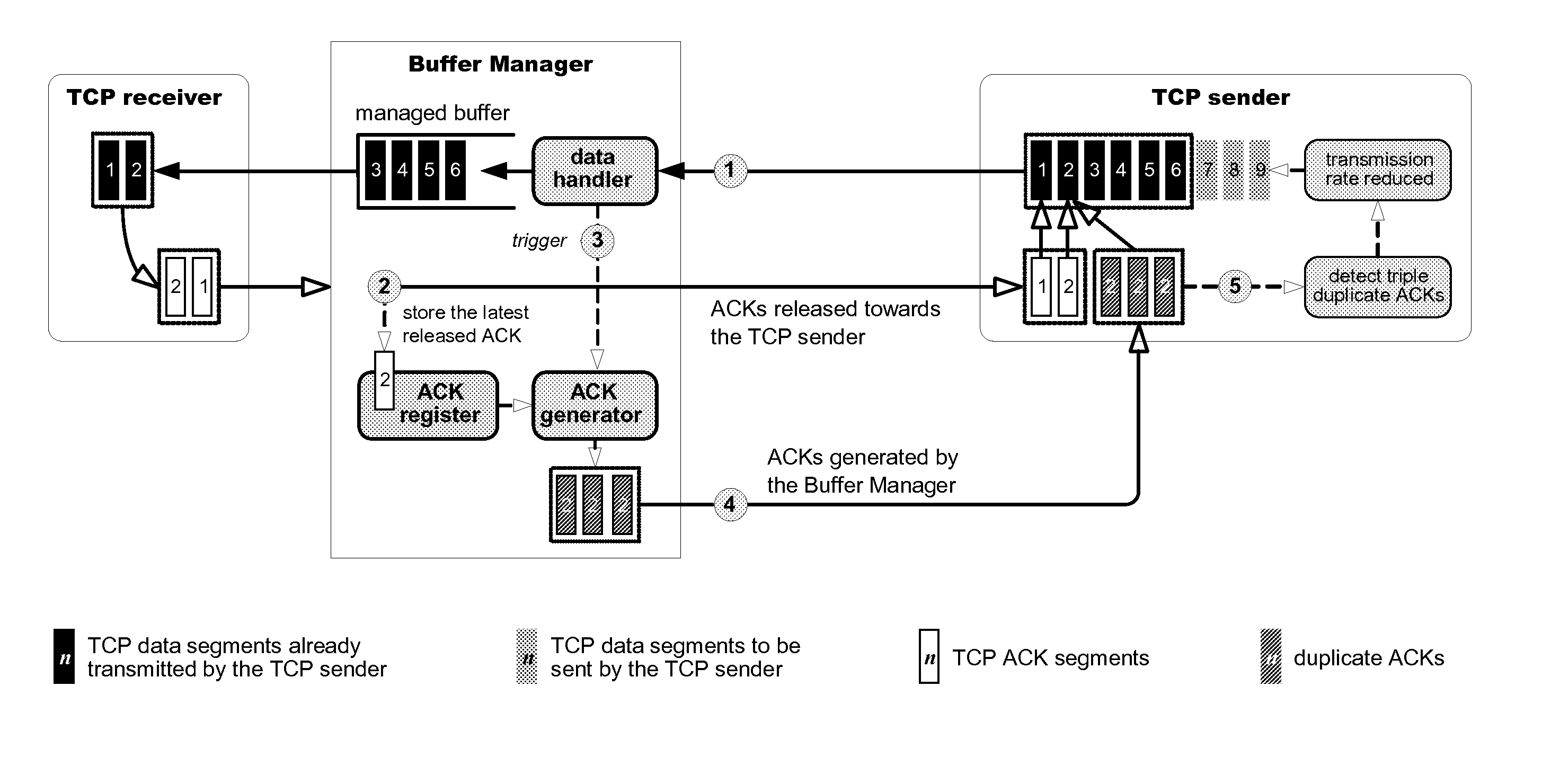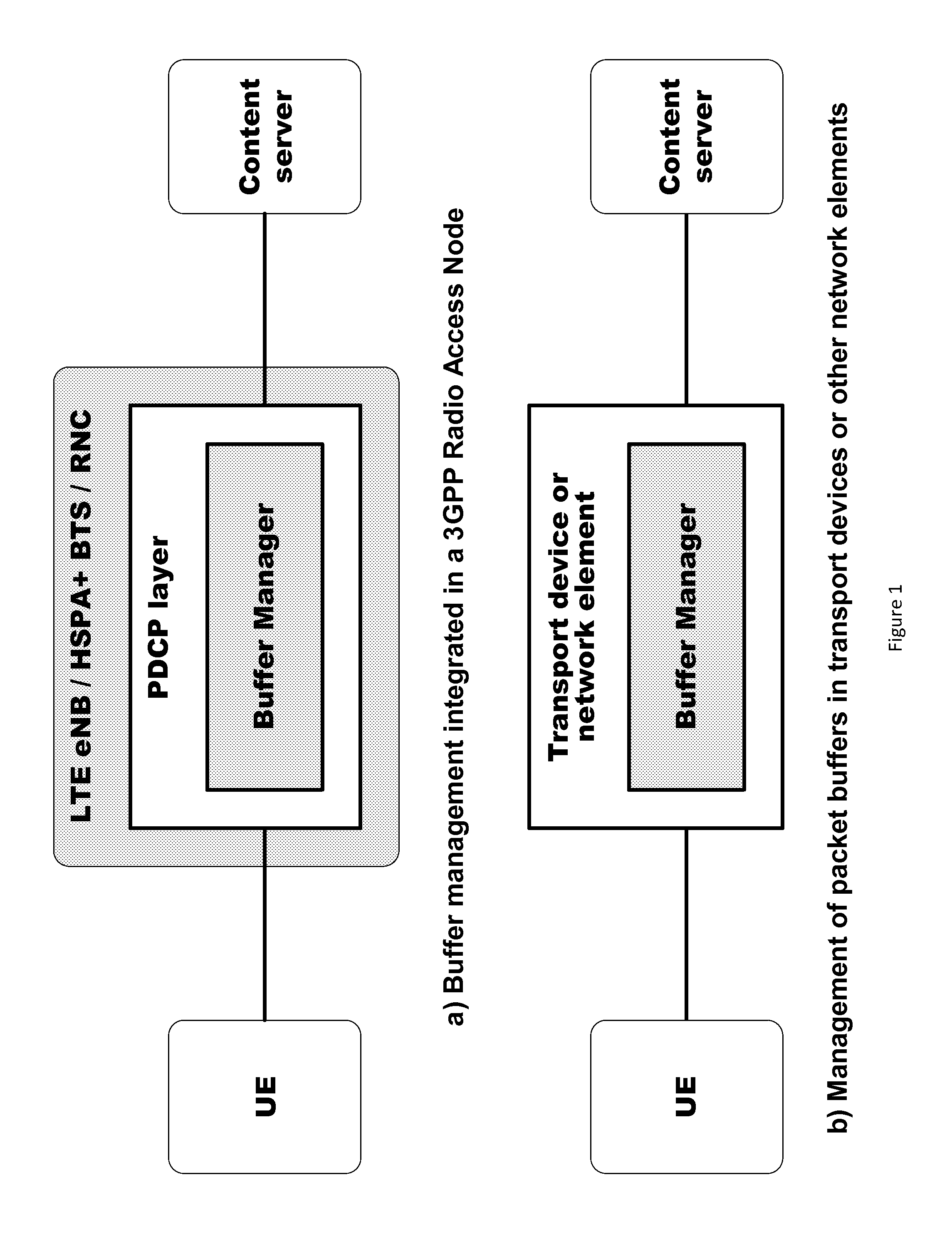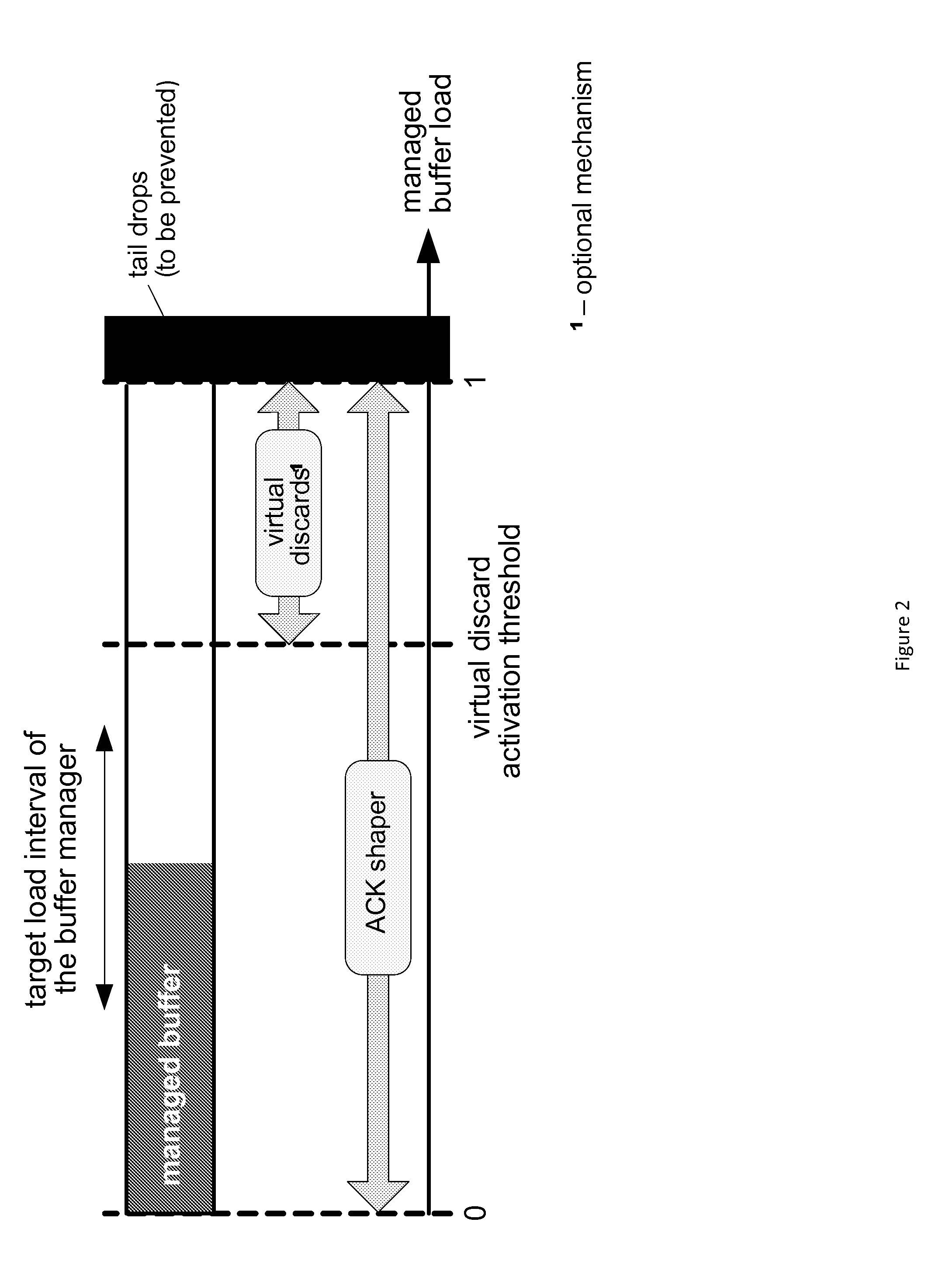Network-side buffer management
a network-side buffer and buffer technology, applied in the field of network-side buffer management, can solve the problems of large size, efficiency and fairness, and negative impact on data flows
- Summary
- Abstract
- Description
- Claims
- Application Information
AI Technical Summary
Benefits of technology
Problems solved by technology
Method used
Image
Examples
Embodiment Construction
[0027]Certain embodiments provide a buffer management mechanism that is especially fitted for the management of the PDCP buffer. Instead of using early discards as a control action, the transmission rate of the TCP senders can be controlled by supervising and adjusting the rate of the corresponding ACK flow, a mechanism referred to as ACK shaping. The ACK shaping can be a non-intrusive mechanism that enables smooth control of the TCP connections, either for slow down or speed up, according to the depletion rate of the managed buffer, ensuring that data does not arrive at the buffer faster than it is consumed.
[0028]Besides ACK shaping, certain embodiments provide an additional control mechanism, referred to as the virtual discard. The virtual discard can trigger the congestion control mechanism of the TCP senders with the lowest latency that is theoretically possible, faster than any of the prior AQMs do, without actually discarding any data segment. The virtual discard can be trigge...
PUM
 Login to View More
Login to View More Abstract
Description
Claims
Application Information
 Login to View More
Login to View More - R&D
- Intellectual Property
- Life Sciences
- Materials
- Tech Scout
- Unparalleled Data Quality
- Higher Quality Content
- 60% Fewer Hallucinations
Browse by: Latest US Patents, China's latest patents, Technical Efficacy Thesaurus, Application Domain, Technology Topic, Popular Technical Reports.
© 2025 PatSnap. All rights reserved.Legal|Privacy policy|Modern Slavery Act Transparency Statement|Sitemap|About US| Contact US: help@patsnap.com



